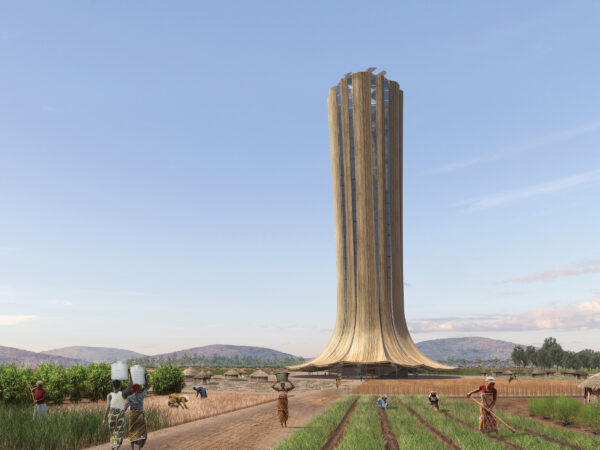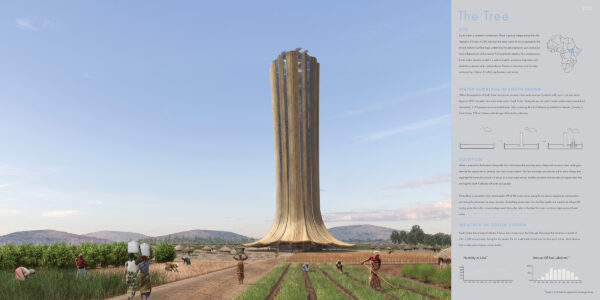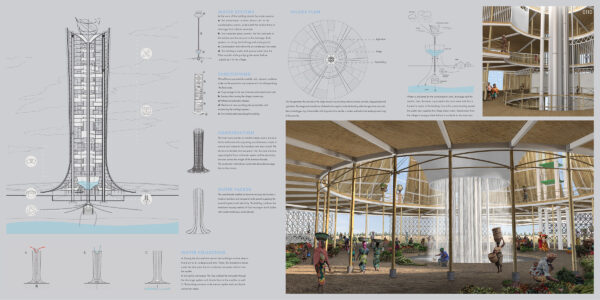Honorable Mention
2022 Skyscraper Competition
Ron Krakovski, Talia Tsuk
Israel
The main purpose of The Tree skyscraper is to provide accessible water to the villages of South Sudan. The Tree unifies the new community while providing it with water for agriculture, sanitation, and everyday needs.
South Sudan is located in northeastern Africa; it gained independence from the Republic of Sudan in 2011, making it the latest nation to be recognized by the United Nations. Conflicts have undermined the developmental gains achieved since independence and worsened the humanitarian situation. As a consequence, South Sudan remains caught in a web of fragility, economic stagnation, and instability a decade after independence. Poverty is ubiquitous and has been reinforced by a history of conflict, displacement, and shocks.
59% of the population of South Sudan lack proper access to clean water sources. Constant conflict and civil war, which began in 2013, Have led to the current water crisis in South Sudan. During the war, the nation’s water systems were deserted and demolished. 1 in 3 people use contaminated water daily, increasing the risk of infection by waterborne diseases. Currently, in South Sudan, 77% of children under the age of five die from diarrhea.
Water is essential to the function of every life form. We believe that providing every village with access to clean water gives them a fair opportunity to develop their lives in every aspect. The Tree skyscraper provides aid for every village and organizes the community around it. It serves as a clean water source, enables education, and provides job opportunities that can help the South Sudanese to flourish as a people and community.
The building is connected to the natural aquifer Which fills it year-round; during the dry season using hot air condensation, and during the wet season by using rainwater. The building draws water from the filled aquifer and supplies the village with running water due to the communicating vessels theory that relies on the idea that water runs from a high source to lower zones.
South Sudan has a tropical climate; it has a rainy season from April through December that receives a rainfall of 750–1,000 mm annually. During the dry season, the air is extremely humid, and the dew point is low, which means that condensation happens more readily.
The water that is collected goes through the water cycle: Water is collected by the condensation tank, drainage, and the aquifer; then, the water is pumped to the main water tank that is located in the center of the building. Due to the communicating vessels, the water tank supplies the village with clean water. Wastewater from the village is being purified before it runs back to the main tank.
The interior of the building has wooden floors supported by metallic rails, dynamic partitions make out the spaces for any purpose and can change along the floor’s rails. Along with the building are different functions provided for the community’s use: A crops storage, a sanitary clinic, professional education, and a mechanical area for maintaining the building’s systems. The Tree helps the community gain education and also provides job opportunities.
The outer facade is installed on the inner structure, the facade is made of bamboo and transparent solar panels supplying the essential systems with electricity. The building combines the traditional housing method of Tukul housing in South Sudan with modern techniques and materials.

















